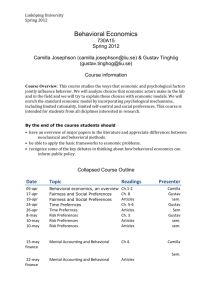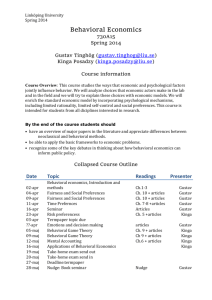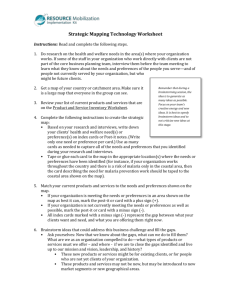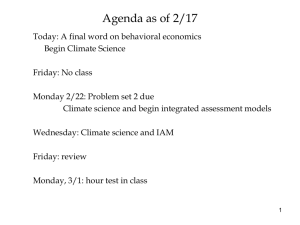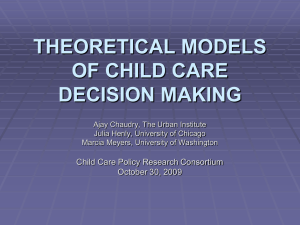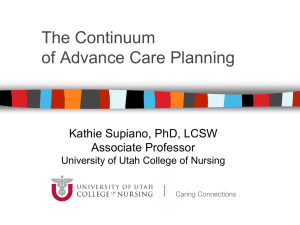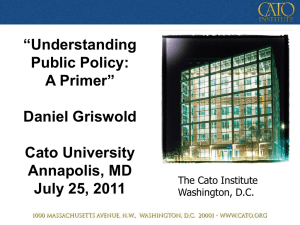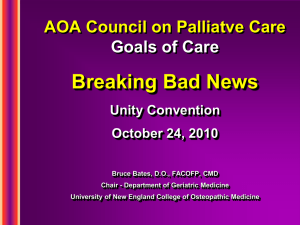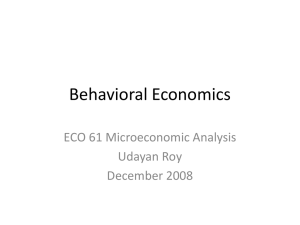12 apr Fairness and Social Preferences - IEI
advertisement
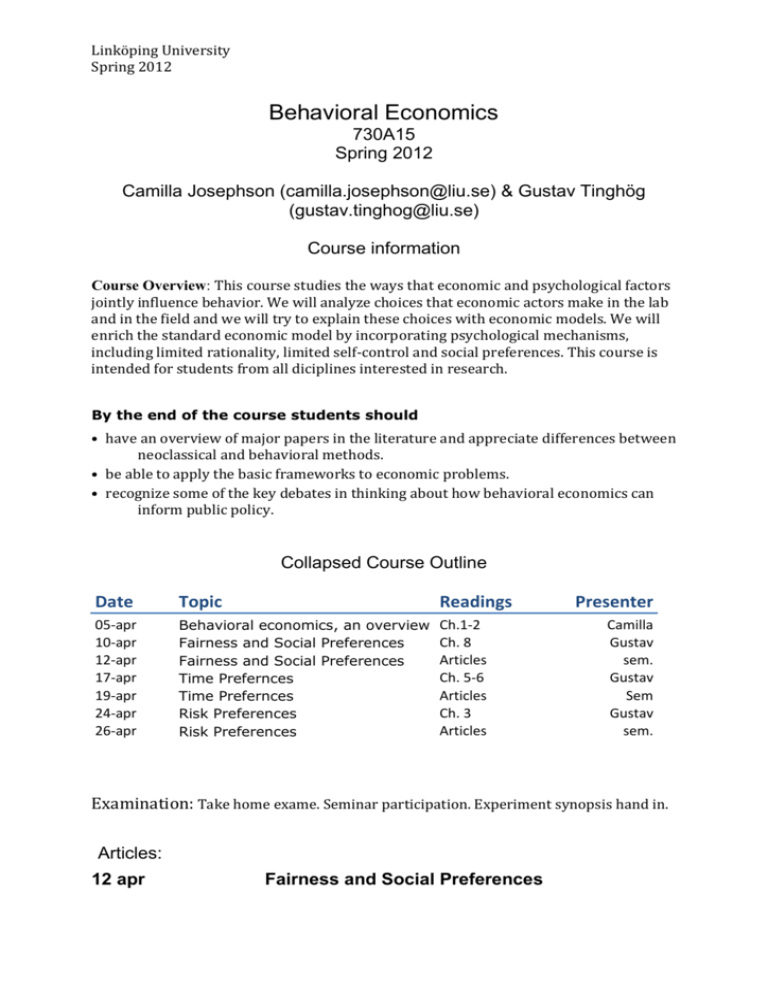
Linköping University Spring 2012 Behavioral Economics 730A15 Spring 2012 Camilla Josephson (camilla.josephson@liu.se) & Gustav Tinghög (gustav.tinghog@liu.se) Course information Course Overview: This course studies the ways that economic and psychological factors jointly influence behavior. We will analyze choices that economic actors make in the lab and in the field and we will try to explain these choices with economic models. We will enrich the standard economic model by incorporating psychological mechanisms, including limited rationality, limited self-control and social preferences. This course is intended for students from all diciplines interested in research. By the end of the course students should • have an overview of major papers in the literature and appreciate differences between neoclassical and behavioral methods. • be able to apply the basic frameworks to economic problems. • recognize some of the key debates in thinking about how behavioral economics can inform public policy. Collapsed Course Outline Date Topic Readings 05-apr 10-apr 12-apr 17-apr 19-apr 24-apr 26-apr Behavioral economics, an overview Fairness and Social Preferences Fairness and Social Preferences Time Prefernces Time Prefernces Risk Preferences Risk Preferences Ch.1-2 Ch. 8 Articles Ch. 5-6 Articles Ch. 3 Articles Presenter Camilla Gustav sem. Gustav Sem Gustav sem. Examination: Take home exame. Seminar participation. Experiment synopsis hand in. Articles: 12 apr Fairness and Social Preferences Linköping University Spring 2012 Henrich, J., R. Boyd, et al. (2001). "In search of Homo economicus: Behavioral experiments in 15 small-scale societies." American Economic Review 91(2): 7378. Mellström, C. and M. Johannesson (2008). "Crowding out in blood donation: was Titmuss right?" Journal of the European Economic Association 6: 845-863. 19 apr Time Preferences Frederick, K. (2003). "Measuring intergenerational time preferences: Are future lives valued less?" Journal of Risk and Uncertainty 26(1): 39-53. O’Donoghue, T. and M. Rabin (1999). "Doing it now or doing it later." American Economic Review 89(1): 103-124. 26 apr Risk Preferences Kahneman, D. (2003). "Maps of bounded rationality: Psychology for behavioral economics." American Economic Review 93(5): 1449-1475. Kahneman, D., J. L. Knetsch, et al. (1990). "Experimental Tests of the Endowment Effect and the Coase Theorem." Journal of Political Economy 98(6): 1325-1348. List, J. A. (2004). "Neoclassical theory versus prospect theory: Evidence from the marketplace." Econometrica 72(2): 615-625.
